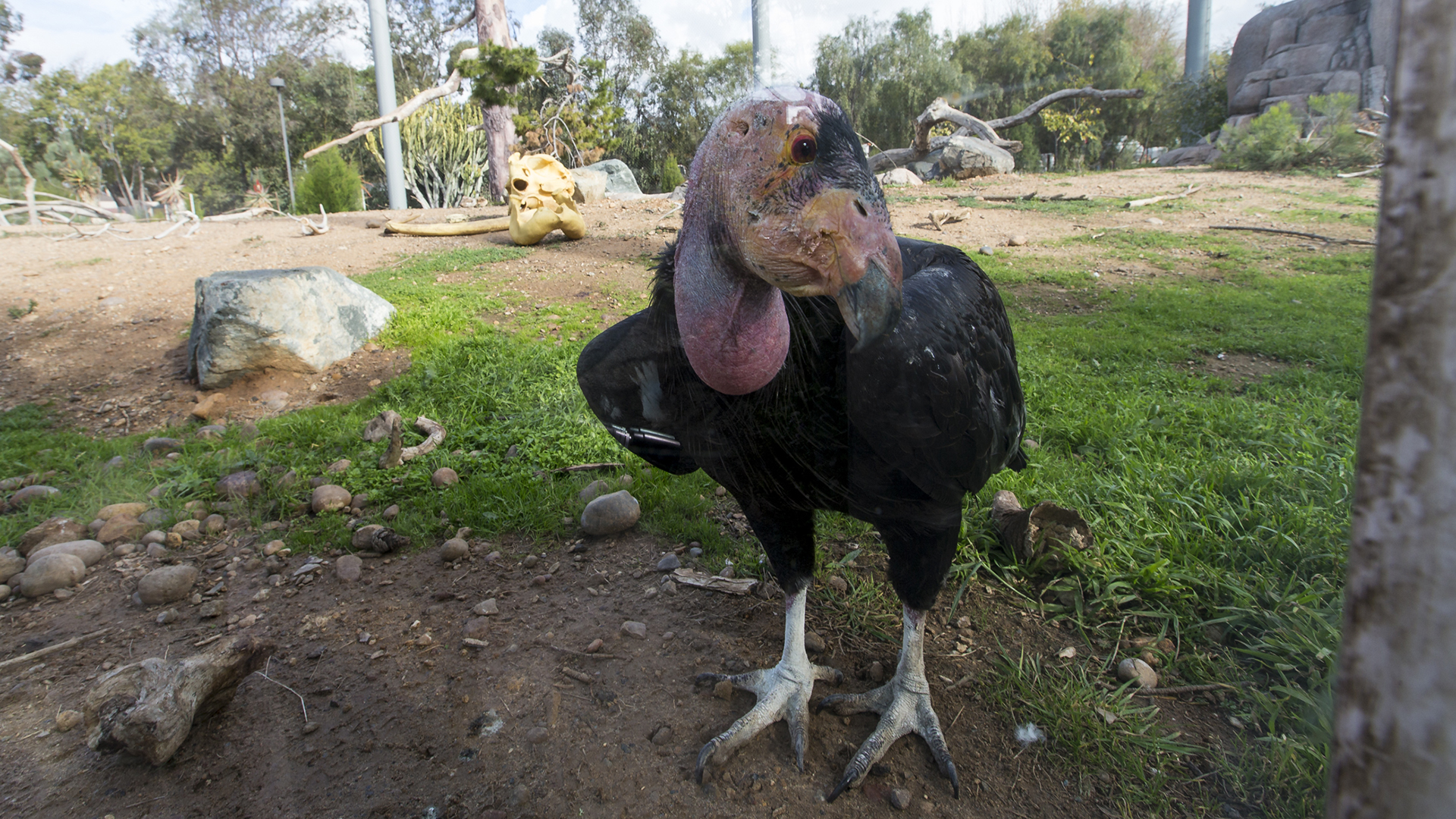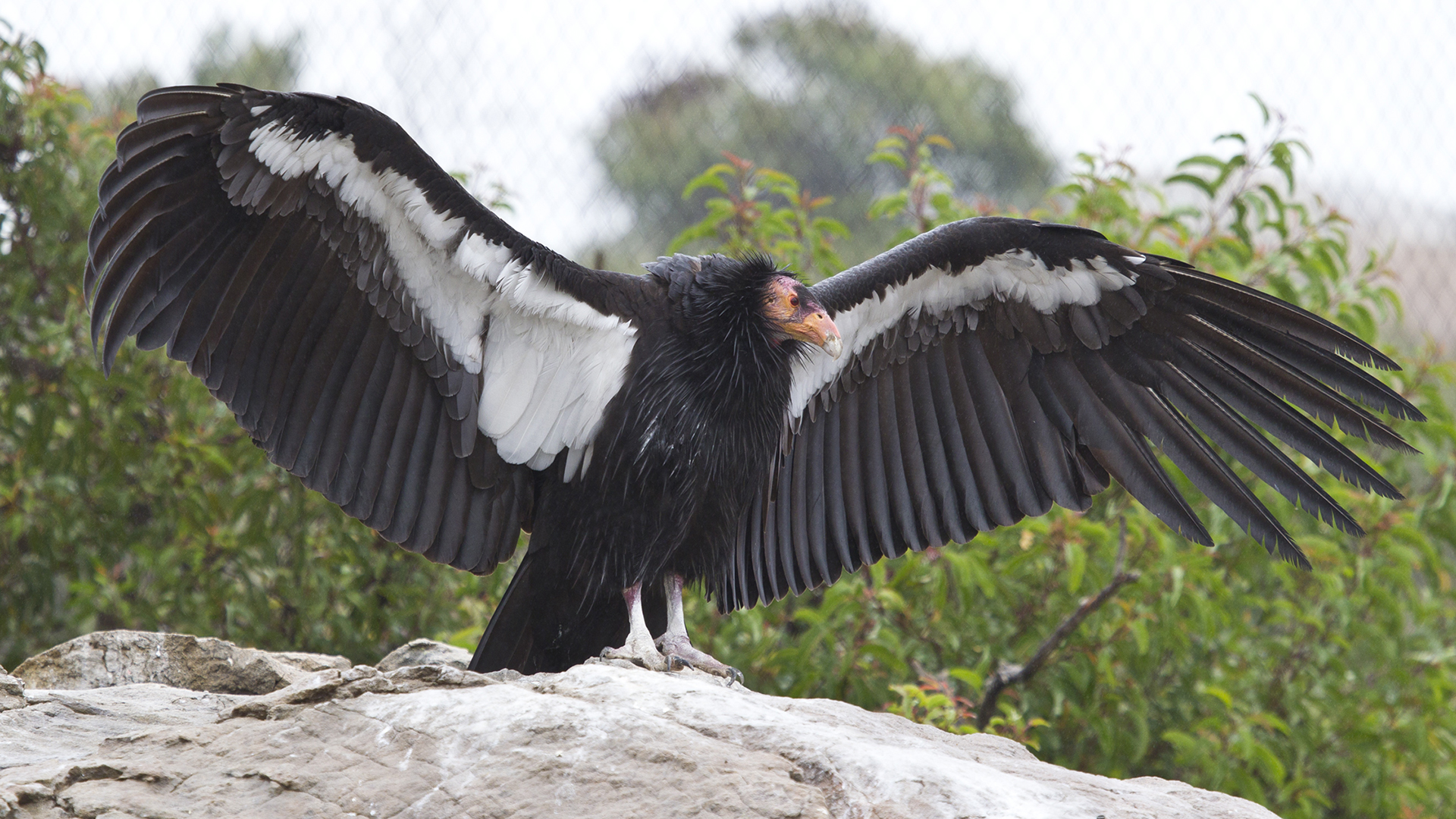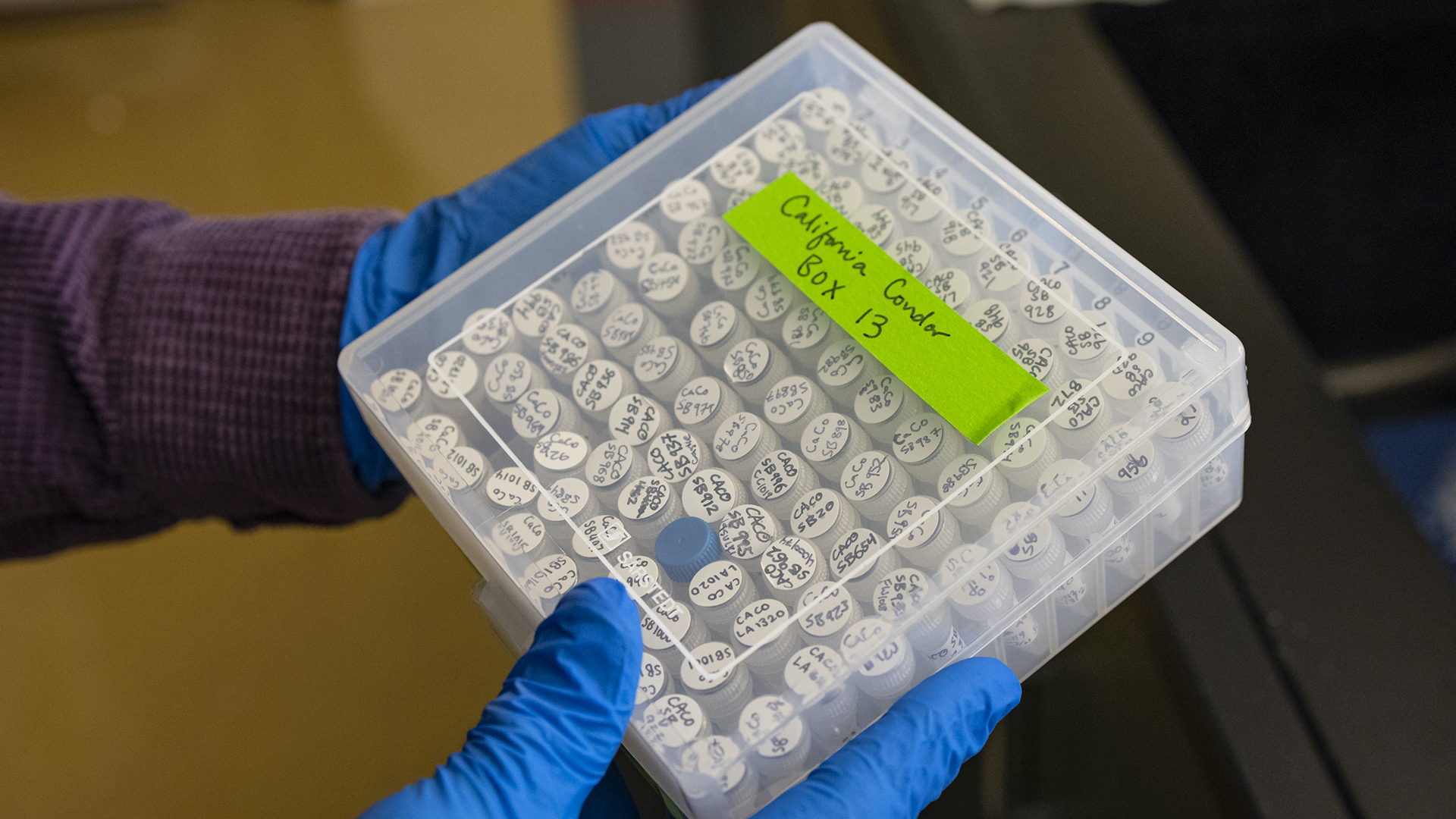Critically endangered condor chicks are species' 1st known 'virgin births'
The birds carry no DNA from any male condors in wild or captive populations.

Scientists have reported the first known "virgin births" in California condors — two chicks that hatched without any males involved in fertilizing the eggs.
Researchers recently made the unexpected discovery that the genomes of these two birds contained no DNA from any condor males, according to a genetic database that encompasses the entire California condor species. This made the two fatherless condors rare examples of a type of asexual reproduction called parthenogenesis, researchers reported in a new study.
During parthenogenesis, spontaneous embryonic development occurs without fertilization. It's rare but not unheard of in reptiles and fish, and while scientists have documented parthenogenesis in domesticated birds such as turkeys and chickens, this is the first example of a "virgin birth" producing viable chicks in a population of wild condors.
Related: Hail Mary! 9 amazing tales of virgin births in the animal kingdom
Discovering this male-free reproductive strategy in California condors (Gymnogyps californianu) is significant, because just a few decades ago the species came dangerously close to vanishing from the wild. In the 1980s, fewer than two dozen condors remained in the wild, but dedicated conservation efforts and breeding programs brought condors back from the brink of extinction. As of 2020, there were 504 condors, of which 329 were wild and "free flying," according to a report published in December of that year by the U.S. Department of the Interior's California Condor Recovery Program.
However, the species is still considered to be critically endangered. Finding that condors can reproduce asexually — potentially increasing the species' chances of producing offspring — is therefore a pretty big deal, said study co-author Cynthia Steiner, an associate director in conservation genetics at the San Diego Zoo Wildlife Alliance.

For the past 30 years, researchers have cataloged DNA data from every California condor — more than 1,000 birds in all — compiling that information into a database. Scientists who work with the condors conduct genetic analysis of the birds routinely to determine relationships, which enables them to breed condors so that the population maintains genetic diversity, Steiner told Live Science. This approach helps to prevent inbreeding and the development of inherited disorders such as condor dystrophy, "which is characterized by malformations in the embryos and late embryonic mortality," Steiner said.
Sign up for the Live Science daily newsletter now
Get the world’s most fascinating discoveries delivered straight to your inbox.
But when the researchers recently analyzed the genotypes of two male condors in the database — both had been released in the wild but are now deceased — they noticed something extremely unusual: Genetic information in the two birds matched up only to the females that hatched them. According to the database, "no male qualified as a potential sire," the researchers reported.
"When animals reproduce sexually, females and males contribute to the genetic makeup equally. But in these two condors, we couldn't find any contribution coming from any male we had in our database," Steiner said. "That was a red flag."

One possibility that the scientists considered was an error in the birds' genetic tests, so they repeated the process. The results didn't change.
"At that point, it was like a 'Eureka!' moment, when we figured out that parthenogenesis was a possibility," Steiner said. "The only way that we could explain the genotypes of these two individuals was by having a contribution that is 100% from the female, with no paternal contribution."
The condor chicks born via parthenogenesis would be male-only, she added. That's because only two matching sex chromosomes can be formed during this type of asexual reproduction. And in condors, it's the females that have the mismatched sex chromosomes "Different sex-determination chromosomes are used in birds and humans: the XX (female)/XY (male) system in humans, versus the ZW (female)/ZZ (male) in birds," Steiner said. When the momma condor fertilizes her own eggs, the resulting offspring all have ZZ chromosomes (WW is not a viable match-up).

The mothers of these two birds had produced multiple chicks over time via sexual reproduction, but further study would be required to determine the factors that led them to reproduce asexually, Steiner said. Though many questions remain about so-called virgin births in this endangered species, one thing is certain: Without this extensive database of genetic profiles, the researchers would never have discovered the parthenogenesis in condors.
"There's still so much to learn about wild species, especially the way that genomics is involved in shaping their survival," Steiner said.
The findings were published Oct. 28 in the Journal of Heredity.
Originally published on Live Science.

Mindy Weisberger is an editor at Scholastic and a former Live Science channel editor and senior writer. She has reported on general science, covering climate change, paleontology, biology and space. Mindy studied film at Columbia University; prior to Live Science she produced, wrote and directed media for the American Museum of Natural History in New York City. Her videos about dinosaurs, astrophysics, biodiversity and evolution appear in museums and science centers worldwide, earning awards such as the CINE Golden Eagle and the Communicator Award of Excellence. Her writing has also appeared in Scientific American, The Washington Post and How It Works Magazine. Her book "Rise of the Zombie Bugs: The Surprising Science of Parasitic Mind Control" will be published in spring 2025 by Johns Hopkins University Press.









